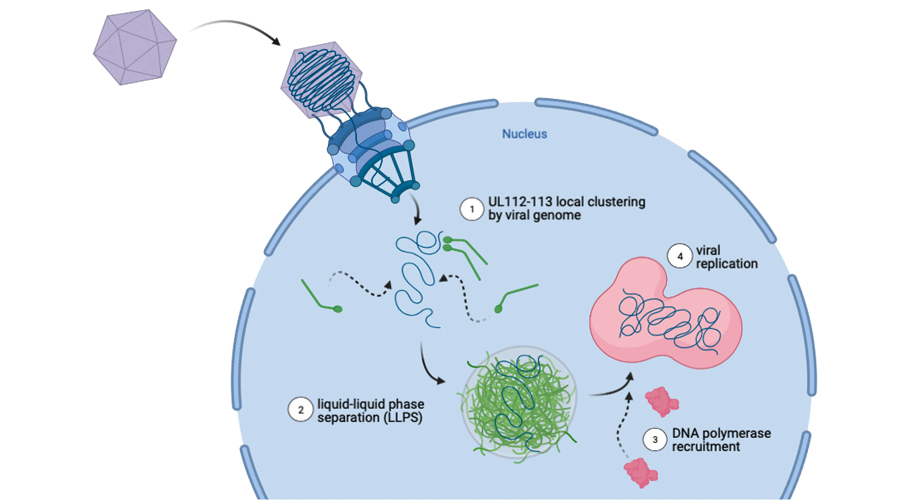Research team further elucidates how cytomegalovirus replicates:
Human cytomegalovirus (HCMV) is a major cause of illness and mortality in immunocompromised transplant patients and the most common cause of infection in newborns worldwide.
In HCMV infection, the virus replicates its DNA genome in specialised replication compartments in the nucleus of the host cell. These membraneless organelles arise as round structures and increase in size over time. However, the exact mechanism of biogenesis of the replication compartments is still unknown.
A team led by Professor Dr. Wolfram Brune (HPI) and RESIST Professor Dr. Jens Bosse (MHH, CSSB, HPI), has now been able to show that the HCMV proteins UL112-113 undergo phase separation, which supports the formation of the replication compartments in the cell nucleus. The phase-separated pre-replication compartments formed in this way are necessary to recruit the viral DNA polymerase for the genome replication of the viruses. The results were published in the journal “Cell Reports“. The team of scientists, in which RESIST researcher Prof. Grünewald was also involved, used so-called live-cell imaging and photo-oligomerisation methods for their work. The elucidation of these replication processes contributes to achieving the long-term goal of being able to better ward off and treat HCMV infections.
The text is based on a press release by Dr. Franziska Ahnert-Michel, Press and Public Relations of the Heinrich Pette Institute – Leibniz Institute for Experimental Virology (HPI).
The figure shows what happens in the cell nucleus: HCMV proteins UL112-113 (green), a pre-replication compartment (centre), a replication compartment (red) and the viral genome (blue). Copyright: Flomm, F. und Bosse, JB.

